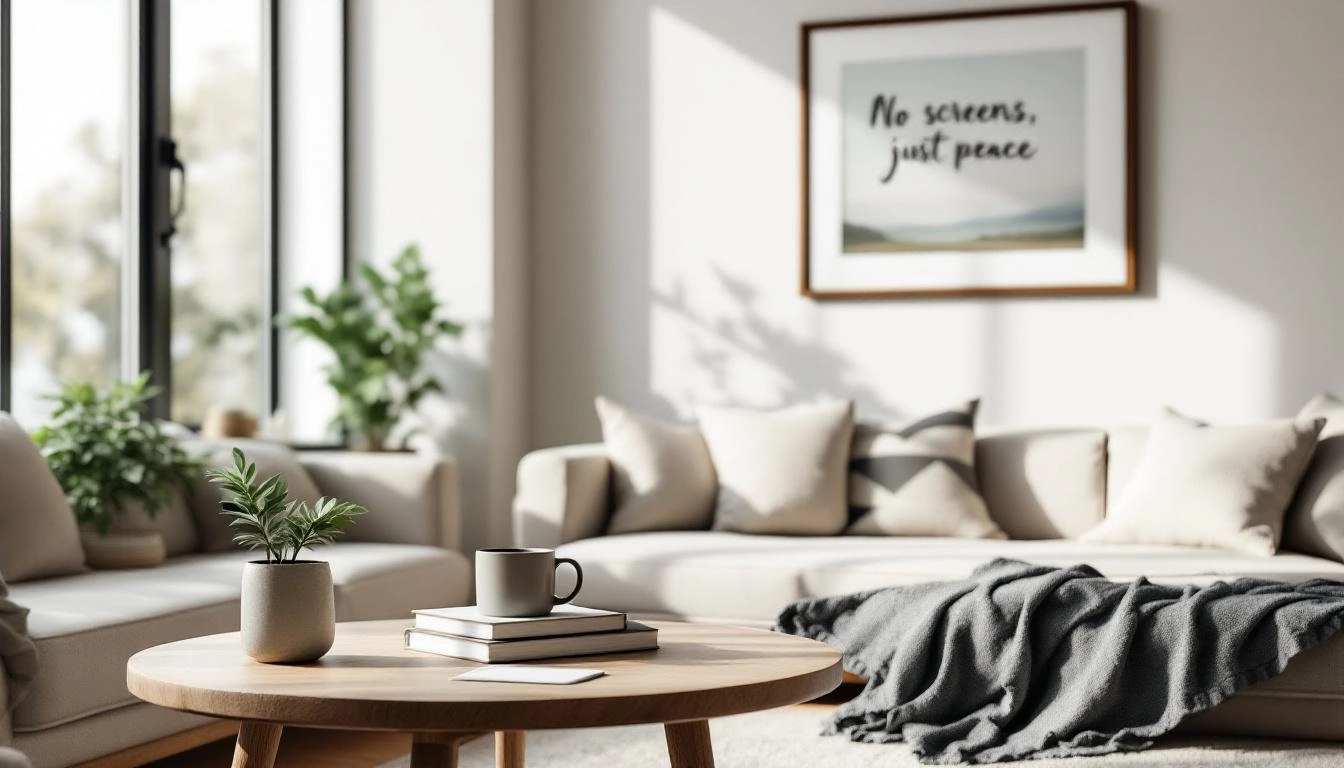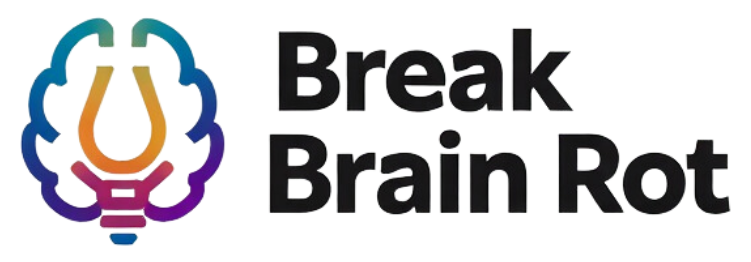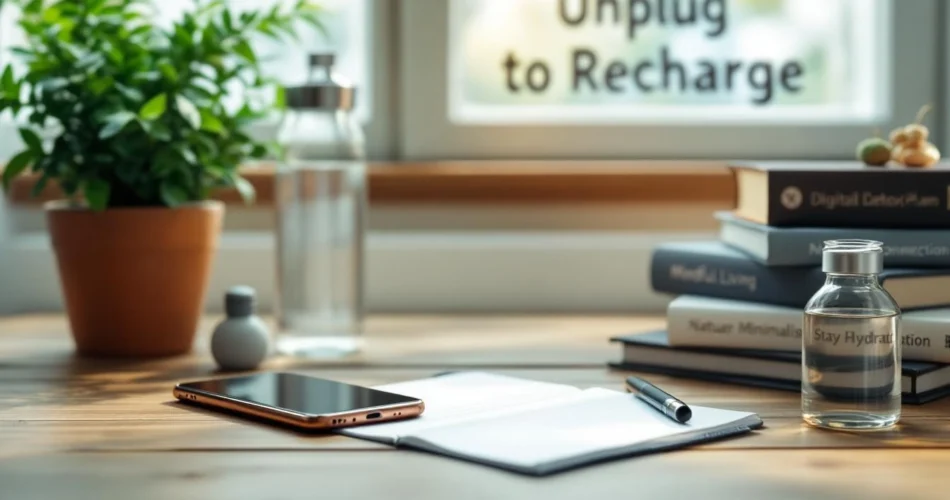Imagine waking up to a flood of notifications before even taking a breath. You scroll “just for a minute,” and suddenly thirty minutes are gone. That cycle of overstimulation has become the norm—but it doesn’t have to be. If you’ve ever felt overwhelmed by your devices, you’re not alone. More people are exploring digital detox strategies to reclaim focus, creativity, and peace of mind. In this guide, you’ll discover proven, achievable methods to take control of your time, reduce screen dependence, and nurture a healthier relationship with technology.
Table of Contents
- Understanding the Need for Digital Detox
- Setting Realistic Digital Boundaries
- Practical Digital Detox Strategies for Everyday Life
- Mindfulness and Mental Health During a Detox
- Tracking Progress and Maintaining Balance
- FAQs on Digital Detox Strategies
- Conclusion
Understanding the Need for Digital Detox
The Psychological Effects of Constant Connectivity
According to Psychology Today, persistent connection to screens reduces attention span, increases anxiety, and disrupts sleep cycles. The constant stream of notifications keeps your brain in alert mode, making it harder to relax. A structured digital detox can help restore calm, balance dopamine responses, and improve overall well-being.
Why a Digital Detox Matters in the Modern Age
Pulling back from your digital feed allows your brain to reset. Taking time offline improves concentration, nurtures creativity, and strengthens real-world relationships. You can read more about the Importance of Mindful Living to understand how intentionality fosters a happier daily rhythm.
How to Identify If You Need a Digital Detox
If you feel anxious without your phone, scroll for hours without purpose, or find it hard to sleep, it’s time to reconsider your habits. Performing a quick self-assessment using our Signs of Technology Addiction guide may reveal patterns that disrupt your peace.
Setting Realistic Digital Boundaries
Defining Your Digital Priorities
Start by identifying which apps enhance your productivity and which simply drain your energy. Use built-in tools like Apple’s Screen Time or Google’s Digital Wellbeing to audit remaining screen hours. Decide what adds value—and what you can do without.
Creating Tech-Free Zones and Times
Establish device-free zones around your dining table or bedroom. Research from the American Psychological Association supports reducing screen exposure before bed for optimal sleep quality. Even 30 minutes unplugged before sleep can make mornings clearer and calmer.
Communicating Your Boundaries
Let family and friends know about your digital detox plan. Explaining your reasoning prevents misunderstandings and helps others respect your offline time. Remember, boundaries aren’t restrictions—they’re commitments to a better quality of life.
Practical Digital Detox Strategies for Everyday Life

The Power of Scheduled Breaks
Structure your digital detox around timed breaks. Techniques like the Pomodoro method—25 minutes of focused work followed by 5 minutes screen-free—enhance productivity. For remote professionals, see our Productivity Techniques for Remote Workers to make these breaks intentional and restorative.
Substituting Online Activities with Offline Hobbies
Replacing scrolling with tangible hobbies is essential. Painting, gardening, exercise, or journaling can energize you more than passive consumption. The health experts at Healthline highlight how hobbies support mood regulation and reduce stress hormones.
Embracing Minimalist Technology Use
Consider using “focus modes” or applications that hide distracting notifications. Tools like Freedom or digital wellbeing settings help minimize app temptation, allowing you to stay online only with purpose.
Mindfulness and Mental Health During a Detox
Mindful Media Consumption
Don’t cut technology completely—instead, redefine your relationship with it. Follow creators who educate or inspire, unfollow those who trigger comparison. Curation is the essence of mindful digital living.
Meditation and Breathing Exercises for Focus Recovery
Pairing your detox with meditation magnifies benefits. Mindfulness breathing restores focus and calms racing thoughts. See Simple Mindfulness Practices to start with short guided sessions.
Reconnecting with Real-World Experiences
Cook with loved ones, explore nature, or strike up a face-to-face conversation. Real-world moments anchor you, proving that joy isn’t manufactured by screens but experienced through presence.
Tracking Progress and Maintaining Balance
Using Journals or Digital Tools Wisely
Keep a physical or digital journal noting how you feel daily. Record achievements—like reduced screen hours or improved mood. Reflection builds awareness and maintains motivation.
Rewarding Yourself for Small Wins
Celebrate progress with rewards: a coffee outing, extra downtime, or catching up on a hobby. Small recognition keeps you engaged with the journey.
Transitioning Into Long-Term Digital Wellness
Once detox habits feel natural, integrate permanent changes—limited notifications, device-free hours, and intentional screen use. The World Health Organization also emphasizes sustainable digital health as part of total well-being.
Frequently Asked Questions
What are the best digital detox strategies for beginners?
Start small—set specific no-phone hours, use grayscale mode, and practice screen-free mornings. Over time, extend these routines into full-day digital breaks.
How long should a digital detox last?
It varies. A weekend disconnect can refresh your focus, while a longer detox might be needed for chronic overstimulation. The key is consistency, not length.
Can I still use social media while doing a digital detox?
Yes, if used intentionally. Schedule brief, purposeful check-ins instead of endless scrolling, and follow content that actually enriches your life.
What are signs that my digital detox is working?
You’ll notice better sleep, calmer moods, and increased focus. You may also crave your phone less frequently and feel more present in conversations.
Can I use technology to help with my digital detox?
Absolutely. Apps that track screen time, block distractions, or encourage mindful breaks can guide your progress toward long-term digital balance.
Conclusion
Reclaiming your focus and peace begins with practicing the best digital detox strategies. Remember—it’s not about disconnecting from the world but reconnecting with yourself. Start small, stay mindful, and celebrate each success along the way. Begin your journey today with our Guide to Healthy Tech Habits and rediscover the clarity that comes when you unplug with purpose.

